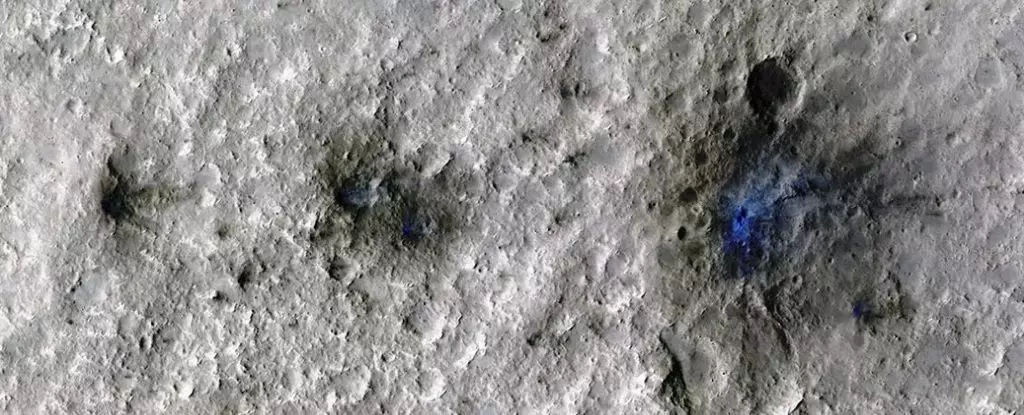Mars, often referred to as the red planet, is experiencing a situation unlike any other planetary body in our solar system. Recent analysis of data obtained by a seismometer on Mars has revealed a startling discovery – the planet is bombarded by meteorites at a much higher frequency than previously believed. The revelation opens up new possibilities for understanding Mars’ geological history and evolution.
The data collected by the Mars InSight lander suggests that Mars encounters impacts from rocks the size of basketballs almost daily. This rate is significantly higher than what orbital imagery had estimated in the past. The seismometer on Mars provided a new perspective on the planet’s geological processes by detecting the tremors caused by meteorite impacts. By combining this seismic data with orbital imagery, scientists were able to paint a clearer picture of the impact rate on Mars.
The rate at which craters form on a planetary surface can be used as a tool to determine the age of the surface. More craters indicate an older surface, while fewer craters suggest a younger surface. By studying the impact rate on Mars, scientists can piece together a timeline of the planet’s geological history and evolution. This information acts as a cosmic clock, helping researchers date Martian surfaces and potentially surfaces of other planets in the Solar System.
Mars’ thin atmosphere, which is over 100 times thinner than Earth’s, offers little protection against incoming rocks from space. Unlike Earth, where most meteors disintegrate in the atmosphere, Mars faces the full force of these impacts. Additionally, Mars is located close to the asteroid belt between its orbit and Jupiter, resulting in a higher concentration of rocks near the red planet. These factors combined contribute to Mars’ high impact rate compared to other planets.
While previous estimates of the Martian impact rate relied on satellite imagery, the InSight mission provided a new perspective through seismological data. The seismometer on Mars was able to detect the faint tremors of impacts that were previously unnoticed. By combining this data with orbital imagery, scientists were able to calculate a global impact rate for Mars. The findings suggest that between 280 and 360 impacts that produce craters over 8 meters occur annually on Mars, with craters over 30 meters appearing approximately once a month.
The discovery of Mars’ high impact rate not only sheds light on the planet’s past but also serves as valuable information for future human exploration. Understanding the frequency and impact of meteorites on Mars is crucial for planning safe and successful missions to the red planet. This new insight into Mars’ geological processes opens up opportunities for further research and exploration.
Mars’ constant bombardment by meteorites is a testament to the dynamic nature of the red planet. The data collected by the Mars InSight mission has revolutionized our understanding of Mars’ geological history and evolution. By analyzing seismic data and orbital imagery, scientists are able to unravel the mysteries of Mars’ past and pave the way for future exploration.


Leave a Reply